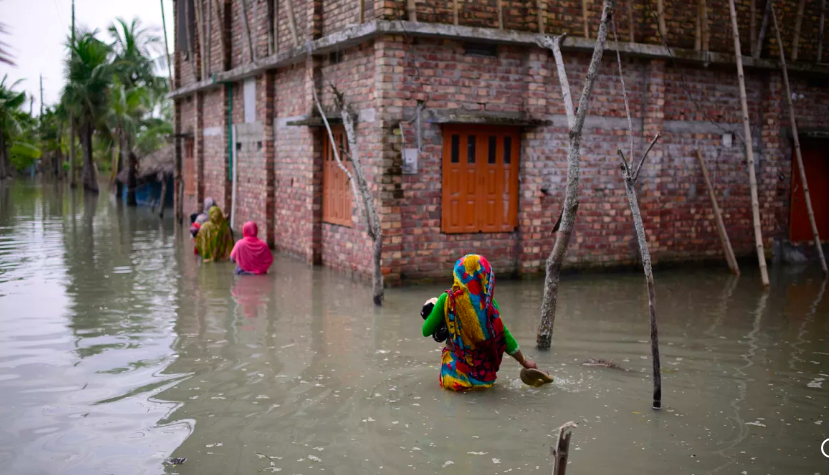"European Aid Cuts: How Budget Reductions Impact Global Development and Climate Goals"

European Aid Budgets Slashed Amid Political and Economic Shifts
A New Era of Reduced Foreign Aid
Political shifts, increased defence spending, and a growing focus on national priorities have led many European nations to slash their foreign aid budgets. Key Western European countries—including the UK, Switzerland, Germany, France, and the Netherlands—have significantly cut aid funding in recent months.
This trend comes as countries grapple with geopolitical tensions and economic uncertainty. With national concerns taking precedence, nations are redirecting resources toward defence and domestic government stimulus measures. The impact of these cuts is already being felt across developing countries that rely on foreign aid to sustain critical development projects.
The Shrinking Official Development Assistance (ODA)
Foreign aid is primarily measured through Official Development Assistance (ODA), which wealthier nations provide to developing countries. The Organisation of Economic Cooperation and Development (OECD) recommends that donor nations allocate at least 0.7% of their Gross National Income (GNI) to foreign aid.
However, several European nations have recently announced significant reductions in their aid budgets:
- Belgium is cutting its aid funding by 25% over five years.
- The Netherlands has slashed aid by 30% and plans to integrate development aid with its national trade, economic, and migration policies.
- France has reduced its aid budget by 37% amid financial challenges and political pressure.
These budget cuts could have devastating consequences for vulnerable nations like Tanzania, Bangladesh, and Zambia, which depend heavily on international financial assistance. Furthermore, they threaten to derail climate finance commitments that developed nations pledged at COP29.
The Reasons Behind the Cuts
Political shifts across Europe have played a significant role in these reductions. The rise of far-right parties in countries like Finland and Sweden has led to an increased focus on national interests over foreign aid. European conflicts, including the Russia-Ukraine war and tensions with the United States over trade policies, have also prompted governments to prioritise defence spending.
The UK, under Prime Minister Keir Starmer, announced in February that its aid levels would drop from 0.5% of GNI to a historic low of 0.3% by 2027. Post-Brexit economic struggles and pandemic-related financial strains have further contributed to these cuts, with the government shifting its focus to increasing defense spending to 2.5% of GDP by 2027.
Similarly, France has been reducing aid while dealing with a record deficit and political instability. The Netherlands has also adopted a more inward-looking approach, prioritising aid programs that directly benefit the country’s interests, such as food security and water management.
Finland and Sweden have followed suit, limiting their aid budgets to programs that align with national objectives, while also increasing spending on defence, policing, and welfare services.
Impact on Climate Finance Goals
The reductions in aid spending come at a time when developed nations have committed to significantly increasing climate finance support. At COP29, countries agreed to provide at least $300 billion (€277.8 billion) annually in climate finance by 2035, tripling the previous $100 billion (€92.6 billion) target.
However, the latest budget cuts may jeopardize these commitments. While climate finance is supposed to be funded separately from ODA, many nations have blurred the lines between the two. In 2022, $27 billion (€25.1 billion) of the $94.2 billion (€87.4 billion) hike in public climate funds came from existing development aid rather than new funding.
Some nations, such as the Netherlands, have explicitly announced reductions in climate finance. Switzerland has also cut climate funding, while France is currently reviewing where its aid reductions should be made. Germany, despite pledging to be the largest climate finance donor at COP29, had already reduced its climate finance budget to €5.7 billion in 2023.
Experts warn that these aid cuts could have long-term consequences for global stability and climate resilience.
The Consequences for Vulnerable Countries
European development aid plays a crucial role in supporting economic stabilisation, health programs, poverty relief, and humanitarian efforts across the Global South.
“Many countries in the Global South face the dual challenges of poverty and climate vulnerability. For them, climate finance is crucial not just for mitigation but also for adaptation,” says Thanos Verousis, Professor of Sustainable Finance at Vlerick Business School.
Cuts to foreign aid could undermine efforts to build climate resilience, including disaster preparedness, agricultural reforms, and renewable energy initiatives. Without adequate support, vulnerable countries may face increased economic and environmental shocks.
Niki Ignatiou, Head of Women, Peace, and Security at ActionAid UK, argues that reducing aid will exacerbate human rights crises.
“Redirecting ODA away from crisis-affected communities to fund further conflict isn’t just morally wrong—it also undermines global stability and commitments to human rights and gender justice,” she says.
Moreover, cutting aid limits access to crucial climate technologies that help developing countries combat natural disasters.
“These regions are often hit hard by climate events, facing wildfires, floods, droughts, and deforestation. Reducing aid removes access to critical tech innovation and services that can strengthen local climate resilience,” says Carsten Brinkschulte, CEO of Dryad Networks, a tech company focused on wildfire prevention.
Alternative Solutions to Aid Cuts
Rather than cutting foreign aid outright, experts suggest that European nations should rethink their approach by redirecting funds to areas where they are most needed. Treating aid as an investment, rather than charity, could help maintain commitments to global development and climate resilience.
“Instead of cutting aid, a more flexible solution could be to reprioritise the allocation of foreign aid,” suggests Verousis. “Governments could focus on increasing efficiency, targeting aid more effectively, and leveraging the support of international organisations and development banks.”
Brinkschulte echoes this sentiment, arguing that preventive investments in climate resilience are more cost-effective than dealing with the fallout of climate disasters.
“A euro spent on climate resilience now saves several euros in emergency response, insurance payouts, and migration costs later. Moreover, redirecting subsidies from fossil fuels—still vast in many nations—could generate funding without increasing budget strain.”
Conclusion
As European nations shift their priorities toward defence and domestic spending, foreign aid budgets are shrinking at an alarming rate. While these cuts may be politically expedient, they come with significant risks, particularly for vulnerable nations that rely on European aid for economic development, climate adaptation, and humanitarian relief.
With climate change presenting an escalating global threat, experts warn that reducing aid now could lead to greater instability, increased migration, and heightened economic risks in the future. A strategic and investment-driven approach to aid allocation could help European nations maintain their commitments while addressing their domestic concerns.
Ultimately, balancing national priorities with global responsibilities will be crucial in shaping the future of foreign aid and climate finance commitments.
- Art
- Causes
- Crafts
- Dance
- Drinks
- Film
- Fitness
- Food
- الألعاب
- Gardening
- Health
- الرئيسية
- Literature
- Music
- Networking
- أخرى
- Party
- Religion
- Shopping
- Sports
- Theater
- Wellness


